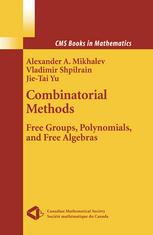

Most ebook files are in PDF format, so you can easily read them using various software such as Foxit Reader or directly on the Google Chrome browser.
Some ebook files are released by publishers in other formats such as .awz, .mobi, .epub, .fb2, etc. You may need to install specific software to read these formats on mobile/PC, such as Calibre.
Please read the tutorial at this link: https://ebookbell.com/faq
We offer FREE conversion to the popular formats you request; however, this may take some time. Therefore, right after payment, please email us, and we will try to provide the service as quickly as possible.
For some exceptional file formats or broken links (if any), please refrain from opening any disputes. Instead, email us first, and we will try to assist within a maximum of 6 hours.
EbookBell Team

4.0
46 reviewsThe main purpose of this book is to show how ideas from combinatorial group theory have spread to two other areas of mathematics: the theory of Lie algebras and affine algebraic geometry. Some of these ideas, in turn, came to combinatorial group theory from low-dimensional topology in the beginning of the 20th Century.
This book is divided into three fairly independent parts. Part I provides a brief exposition of several classical techniques in combinatorial group theory, namely, methods of Nielsen, Whitehead, and Tietze. Part II contains the main focus of the book. Here the authors show how the aforementioned techniques of combinatorial group theory found their way into affine algebraic geometry, a fascinating area of mathematics that studies polynomials and polynomial mappings. Part III illustrates how ideas from combinatorial group theory contributed to the theory of free algebras. The focus here is on Schreier varieties of algebras (a variety of algebras is said to be Schreier if any subalgebra of a free algebra of this variety is free in the same variety of algebras).